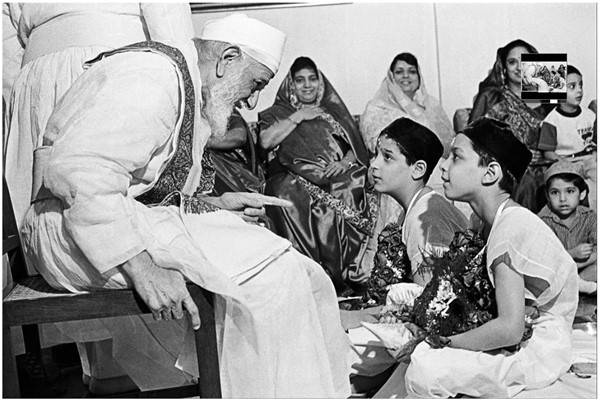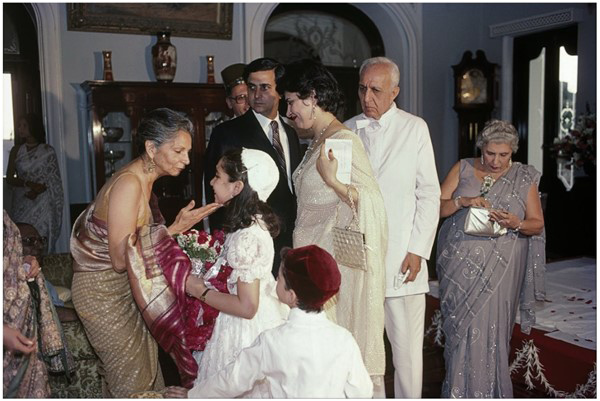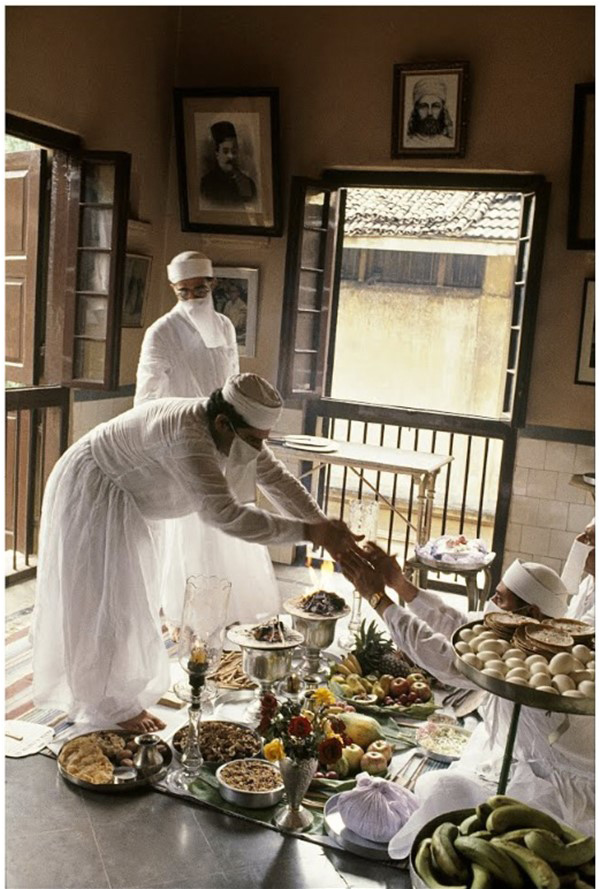
Pictured here is a glimpse into Parsi religion and ritual in Bombay. Naju Bhabha greets a child after her navjote in Bombay in 1985 and Kayrus and Rustom Unwala are pictured with high priest Ervad Kekobad Dastoor at their navjote in Bombay in 1999. Nothing demonstrates their straddling of two worlds, the spiritual and material, in the Zoroastrian faith better than a navjote ceremony (much like the bar and bat mitzvahs). They are an initiation into the religion that takes place before puberty for both boys and girls.

Zoroastrians or Parsis, as they are known in Pakistan and India today, follow the teachings of Zarathustra, whose date of birth is said to have been between 1700 and 1500 BC. It is believed that he was born in Eastern Iran. He gave them a simple creed to follow: Good Thoughts, Good Words, Good Deeds. The faith he revealed was based not on rituals and appeasement but on the moral choices humans make here on earth.

The number of Parsis in Pakistan has dwindled. According to one estimate, there were 5,000 in Karachi at the time of Partition and perhaps 1,200 are left now, although that is considered by many a high number.
These images were part of Sooni Taraporevala’s exhibition ‘Through a lens, by a mirror: the Parsis (1977-2013) at the National Gallery of Modern Art New Delhi.

Zoroastrians or Parsis, as they are known in Pakistan and India today, follow the teachings of Zarathustra, whose date of birth is said to have been between 1700 and 1500 BC. It is believed that he was born in Eastern Iran. He gave them a simple creed to follow: Good Thoughts, Good Words, Good Deeds. The faith he revealed was based not on rituals and appeasement but on the moral choices humans make here on earth.

The number of Parsis in Pakistan has dwindled. According to one estimate, there were 5,000 in Karachi at the time of Partition and perhaps 1,200 are left now, although that is considered by many a high number.
These images were part of Sooni Taraporevala’s exhibition ‘Through a lens, by a mirror: the Parsis (1977-2013) at the National Gallery of Modern Art New Delhi.

